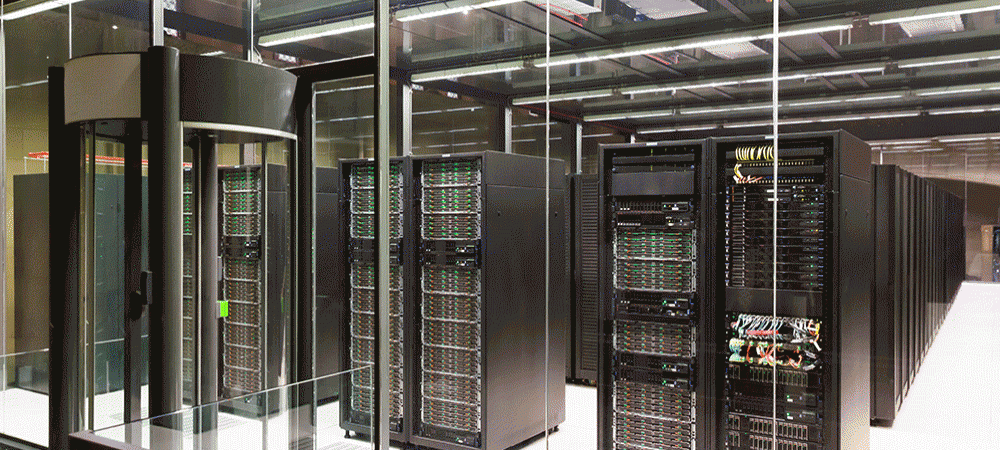Customer service must be engrained into every facet of the date center providers’ industry. Hiroshige Sugihara – Head of APAC, Colt DCS, explains how companies can ensure continuity in the era of disruption.
In APAC and across the globe, we are seeing businesses and enterprises step up their cloud and IoT adoption to achieve unsurpassed levels of digitisation and connectivity. As data center providers, our mission is to ensure we stay ahead of the huge data demands created by modern information technology.
However, meeting demand for capacity is but one piece of the puzzle. Along with increased capacity, modern customers expect unparalleled levels of flexibility and reliability. As such, customer service and collaboration shouldn’t just be a ‘nice to have’ but must be engrained into every facet of the services we provide.
Growth like we’ve never seen before
When it comes to providing data center services for the modern enterprise, hyperscale is the name of the game. Meeting business demand requires data center facilities to grow as customers grow and this means data centers are now larger than ever.
Only a few years ago, we were referring to capacity requirements for customers in kilowatts. These days we are seeing customer data demand exceeding the 20-megawatt range as large businesses demand faster and more complex cloud and IoT services. The current demand levels we are seeing are only set to grow bigger with analyst firm Gartner predicting that there will be as many as 5.8 billion enterprise and automotive endpoints by the end of 2020.
This means hyperscale facilities need to be able to rapidly increase capacity for customers, whilst also ensuring they are operating at peak efficiency at all times. Operators who fail to incorporate scalability into their product roadmaps risk falling behind and losing enterprise customers to data center providers that are better suited to their needs.
Ensuring continuity in the face of disruption
As we think about where the hyperscale data center industry is headed, it is important to consider the impact COVID-19 has had. Despite the disruption we have seen the past few months, the demand for connectivity has not slowed down. In fact, it is only accelerating further, as more employees continue to work from home and businesses focus on cloud migration as a part of their backup plans in case of another wave of shutdowns. No matter what the future may hold, data center providers who wish to retain customers must be dedicated to supporting businesses through these momentous shifts.
This not only requires increased scalability and physical capacity, but also means operators must have the correct management and security protocols in place to ensure facilities can cope with the increased load. A data center is only as effective as its operator, so when we take into account the sheer physical and virtual size of a hyperscale facility catering for multiple 20-megawatt customers, staffing and management expertise is crucial for ensuring smooth operations. This means increased staffing and enhanced management systems to proactively anticipate and diagnose infrastructure and network issues to avoid damaging downtime.
Opportunities abound in APAC
Despite the disruptions we have seen in the past few months, the APAC and Indian data center markets, in particular, are proving to be key areas for growth as large global and local companies continue to see cities such as Mumbai and Tokyo as attractive locations to do business. As such, these regions are seeing unprecedented levels of business data volumes that only hyperscale providers can facilitate. Naturally, this has not gone unnoticed and APAC data center revenue is expected to reach US$32 billion by 2023.
With so much demand for connectivity, competition amongst operators is only set to become fiercer as firms vie for contracts with the ever-growing list of enterprises operating in APAC and India. As we have seen previously in markets such as Europe and the US, the most successful data center operators will not only be the ones that enter the region first, but also the ones that are able prove themselves to be capable of meeting current and future customer requirements.
Ensuring environmental responsibility
Climate change is one of the most important challenges faced by the world today. As a power intensive industry, the data center sector does hold a significant responsibility in continually looking to develop more environmentally friendly practices.
Environmental responsibility requires us to continuously rethink the way we design and operate data center facilities. All the while, we must strike a synergy between sustainability and business goals if companies are to keep up with capacity demands and remain competitive.
The continued expansion in APAC presents operators with a real opportunity to boost sustainability goals through new builds. This way, data center firms can address sustainability and efficiency from the very beginning, incorporating efficiency measures from the planning and design stages, right the way through to construction and operation. We must strive for absolute efficiency across all areas of our facility lifecycles and it is much easier to do so with new facilities rather than by retrofitting older data centers.
However, if the industry is to reach the worthy goal of 100% sustainability, we must also invest in alternative energy sources such as solar and hydro-electric power. Procurement of green renewable energy is key to drastic reductions in the industry’s carbon footprint.
This year has thrown a great number of challenges our way. Yet despite the disruption, APAC is continuing to be one of the most exciting regions for hyperscale operators around the world. Whatever the future has in store, one thing is certain, APAC is looking more connected than ever before.


